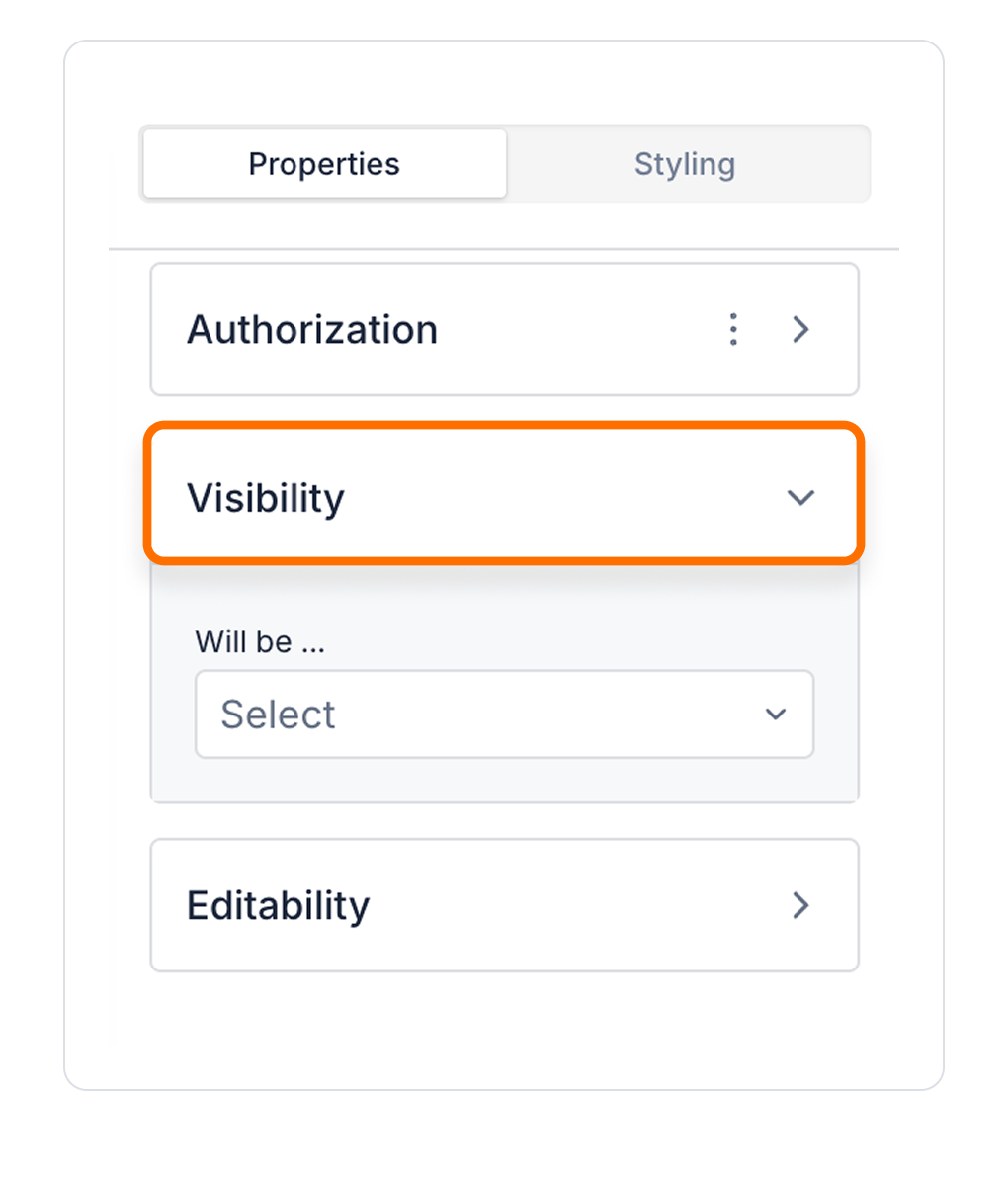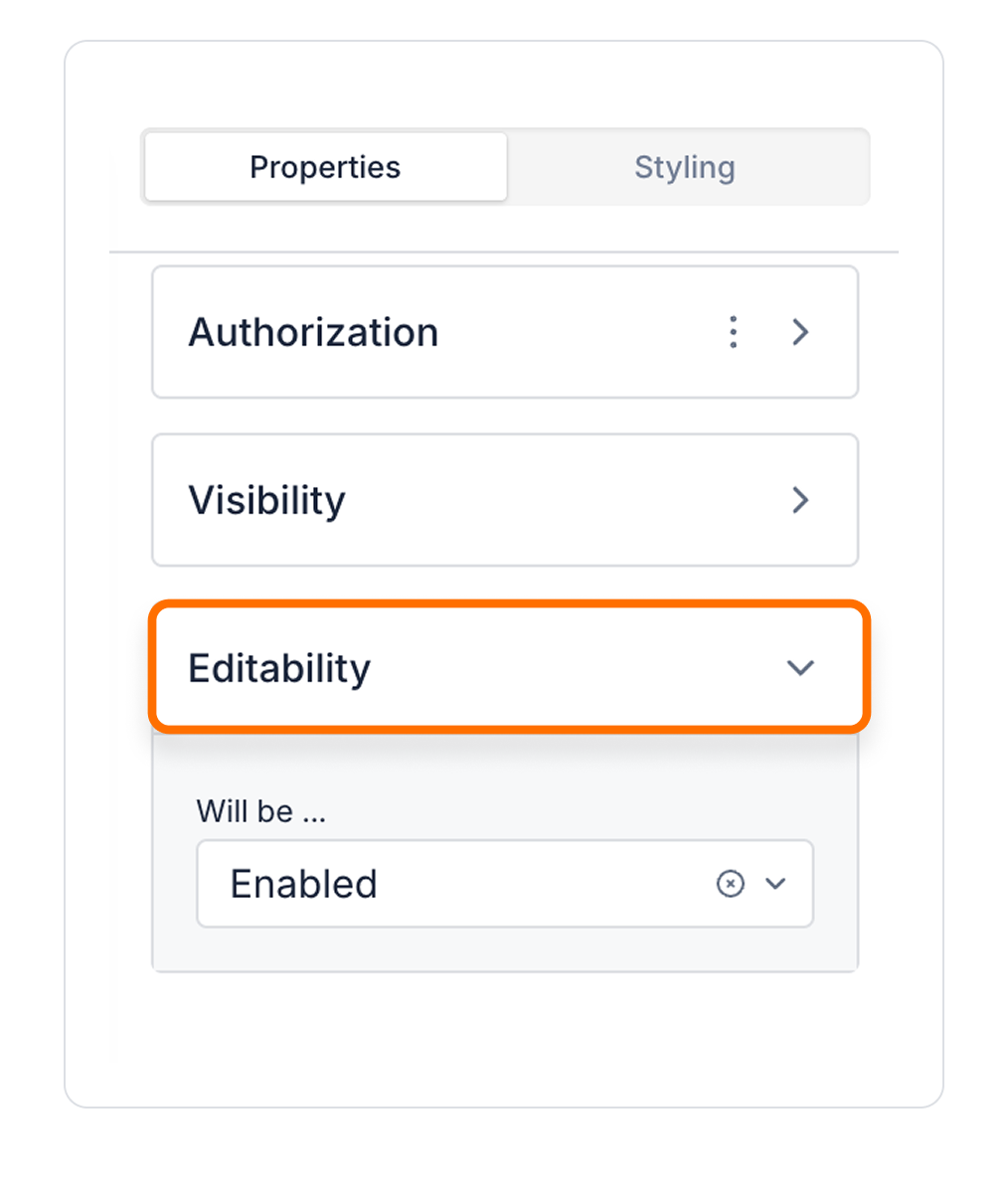


Kuika's Pagination element divides large data sets into pages, making the user experience more organized and fluid. With pagination control, users can easily switch between different pages of data sets. This element is ideal for long lists, reports, or tables and galleries with lots of data. In this tutorial, you will learn how to use the Pagination element and how to set up your page configurations.

You can configure the properties of the Pagination element in the Properties panel on the right sidebar.

The Pagination element provides an organized display of data sets and offers users a flexible navigation experience on a page-by-page basis.
Authorization

To manage access control at the element level, you can use the Authorization section in the Properties panel.
Access Types
Anonymous
Allows all users to view the element without logging in.
Restricted
Restricts access to only verified users or specific roles.
Unauthorized Behavior (Hide / Disable)
If the user does not have the required role, you can specify how the element should behave in the Choose field:
This setting is used to manage how unauthorized users encounter the element.
Visibility

Always Visible: The element is always visible.
Hidden: The element is hidden.
Sometimes Visible: The element becomes visible based on specific conditions.
When Sometimes Visible is used, AND / OR groups can be added directly, allowing visibility rules to be grouped and more complex scenarios to be managed easily.
To configure the setting:


By customizing your elements with the Styling Panel, you can create impressive interfaces for your web and mobile applications. In this section, you can configure the following settings:
By following these steps, you can configure the Area Chart element to suit your needs.